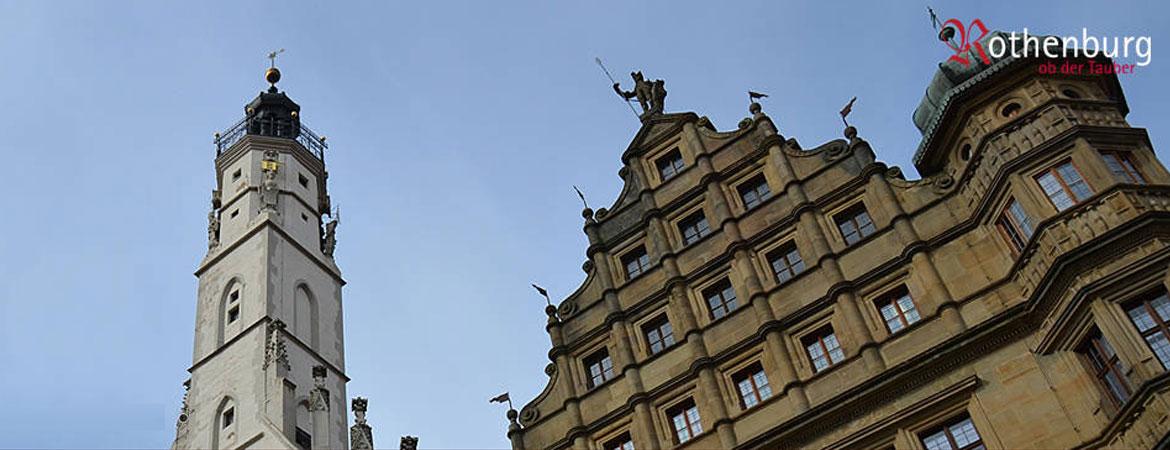
Rothenburgs Rich History
As a "Free Imperial City," or a state within a state, Rothenburg ob der Tauber enjoyed a status that allowed its citizens to enjoy a finer standard of life than people who lived in surrounding towns. Some of the tools of their daily lives can still be seen throughout the city, like the "measuring sticks" on the side of the town hall on the Herrngasse. Because people in those days couldn't read or write, the symbols were useful in promoting commerce in this busy, prosperous city. Citizens used the symbol of "rute," to measure the length of a field or longer distance. A "rute" is 3.93 meters in length, or nearly 13 feet. The measuring device called a "shoe" is 30.2 centimeters, or about the length of an average male foot, and the "elle," used to measure cloth or textiles measures 59 centimeters in length, or about two feet.A common feature of Rothenburg and nearly every other city of its age are the doors and pulley systems mounted high up near the peak of the roof. On top of the houses, on the front side, is a beam reaching into the street. Inside of that beam is a metal wheel and under it a small wooden door or doors. The pulley was mainly used for bringing up large amounts of food, stored in the roof of the house where it was dry and away from the dirty and wet streets and the rats.
Each citizen was required by law to store grain to last a whole year for his family, to survive the time of a siege by forces hostile to Rothenburg. While fresh meat itself was available for all, poor people couldn't afford to store meat because it had to be salted in order to preserve it. Salt was very valuable and expensive, and because of this it was used as a second currency. It was called the "white gold." The word "salary" still shows how close salt and money was connected.
